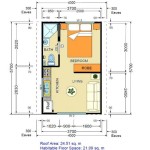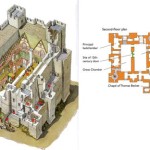Essential Aspects of City of Calgary Property Plans
When it comes to managing and developing property in Calgary, it's essential to understand the City of Calgary's Property Plans. These plans provide a framework for land use, development, and infrastructure within specific areas of the city. By understanding the key aspects of Property Plans, property owners, developers, and residents can make informed decisions and ensure compliance with city regulations.
1. Land Use Designations
One of the most important components of Property Plans is land use designations. These designations specify the permitted uses of land within an area. Common land use designations in Calgary include residential, commercial, industrial, and open space. Understanding the land use designation for a particular property is crucial for planning development projects, obtaining building permits, and ensuring compatibility with surrounding land uses.
2. Zoning Bylaws
Zoning bylaws are legal documents that implement land use designations. They set out specific regulations for development within each zoning district, including building height, density, setbacks, and permitted uses. Zoning bylaws ensure that new developments are compatible with the character and intended purpose of the area, minimize potential conflicts, and promote orderly growth.
3. Infrastructure Planning
Property Plans also consider infrastructure planning, such as roads, utilities, and parks. The City of Calgary works to coordinate infrastructure development with land use planning to ensure that new developments have access to essential services and amenities. Infrastructure planning helps to create livable and sustainable communities, improve mobility, and support economic growth.
4. Community Engagement
Community engagement is an integral part of the Property Planning process. The City of Calgary seeks input from residents, businesses, and community organizations to gather feedback and ensure that Property Plans reflect the needs and aspirations of the community. Public consultations, workshops, and surveys are used to engage the public and incorporate their ideas into the planning process.
5. Environmental Considerations
Environmental considerations play a significant role in Property Planning. The City of Calgary recognizes the importance of preserving and enhancing the natural environment while supporting development. Property Plans incorporate measures to protect water resources, air quality, wildlife habitats, and other environmental assets. By considering environmental factors, the city can promote sustainable growth and protect the health and well-being of its citizens.
6. Review and Amendment Process
Property Plans are not static documents and can be reviewed and amended over time to reflect changing needs and circumstances. The City of Calgary has established a process for amending Property Plans, which involves public consultation and council approval. This process ensures that Property Plans remain responsive to the evolving needs of the community and support long-term development goals.
Conclusion
Property Plans are essential tools for guiding development and managing land use in the City of Calgary. By understanding the key aspects of Property Plans, including land use designations, zoning bylaws, infrastructure planning, community engagement, environmental considerations, and the review and amendment process, property owners, developers, and residents can participate effectively in the planning process and contribute to the creation of livable, sustainable, and thriving communities.

Legal Survey Fabric

Building And Planning Glossary

Building And Planning Glossary

Land Use Bylaw Maps

Building And Planning Glossary

Land Use Bylaw Maps

Building And Planning Glossary

Building And Planning Glossary

City Of Calgary Datasets Land Use Planning Hub

Garage Shed Gazebo And Similar Structures Permits








